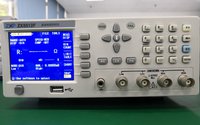Not just substitution: How can domestic AI chips open up a "new track" for the electronic components industry?
Date:2025-09-28 13:46:36 Views:1111
Recently, multiple domestically produced AI chips such as Alibaba Pingtou Ge, Weiren Technology, and Huawei Ascend have made a concentrated appearance on CCTV News. This not only showcases China's technological breakthroughs in the high-end chip field, but also sends a clear signal to the electronic components industry: the increase in the localization rate of AI chips is deeply reshaping the competitive landscape and development model of the domestic semiconductor industry chain. The significance of this change goes far beyond replacing imported chips, but also lies in driving the collaborative upgrading and innovative iteration of the entire upstream component system.

From the perspective of chip design, multiple companies have significantly expanded the market space for electronic component suppliers by adopting diversified technological paths. The Alibaba Pingtouge PPU chip relies on 96GB HBM2e video memory and PCIe 5.0 interface to achieve high-performance computing. The Huawei Ascend 950 pursues ultimate bandwidth through self-developed HiBL 1.0 memory technology, while the Boren BR100 series chooses Chiplet and 2.5D advanced packaging to break through integration bottlenecks. Different architectures exhibit differentiated requirements for peripheral components. From high-speed connectors and power management chips to heat dissipation modules and packaging substrates, various component companies can find opportunities to enter the market, no longer relying on a single customer or technology route.
In the field of core components, substantial progress has been made in improving the localization rate. The 112G backplane connector in Huawei Ascend AI servers is independently supplied by Huafeng Technology, which accounts for 20% to 30% of the market share; In terms of high-speed optical modules, Zhongji Xuchuang has achieved large-scale delivery of 800G products, supporting high-speed data exchange within AI clusters. In the field of packaging substrates, companies such as Shennan Circuit and Xingsen Technology have also achieved technological breakthroughs in high-end products such as FC-BGA, gradually applying them to the packaging process of domestic chips such as Huawei Ascend. These developments indicate that domestic components are steadily moving from being "usable" to being "easy to use".
Packaging testing, as a key link in chip manufacturing, has also become an important battlefield for improving localization rates. Leading domestic packaging and testing companies such as Changdian Technology and Tongfu Microelectronics are accelerating the layout of advanced packaging production capacity such as 2.5D/3D and CoWoS to meet the high bandwidth and low-power requirements of AI chips. Although there is still some dependence on imports in areas such as silicon intermediate layers and special packaging materials, the capability boundaries of domestic packaging technology are constantly expanding, and yield and efficiency continue to improve, providing strong support for the final performance guarantee of chip products.
The development of domestically produced AI chips has also driven an increase in demand for specialized equipment and materials. For example, liquid cooling solutions have become standard in data centers as chip power consumption increases. Domestic manufacturers such as Gaolan Corporation and Shenling Environment have launched related solutions and achieved mass application. In the field of chip testing, the demand for testing machines, probe cards, and other equipment for high computing power chips continues to rise, driving domestic equipment companies to accelerate technology research and development and product iteration.
Although the localization process has achieved significant results, it is still necessary to be aware of the bottlenecks that exist in some links. In the fields of HBM high-speed storage, semiconductor equipment, EDA tools, etc., international manufacturers still dominate, and achieving comprehensive autonomy and controllability still takes time. In addition, balancing the relationship between performance, cost, and large-scale production is also a challenge that domestic component companies need to continuously optimize.
Overall, the collective debut of domestically produced AI chips not only marks the improvement of China's integrated circuit design capabilities, but also signifies a new round of development opportunities for the entire industry chain from chips to components, from materials to equipment. With the deepening of technological iteration and ecological synergy, the improvement of localization rate will no longer be limited to substitution goals, but gradually shift to a new stage of leading technological innovation and shaping industry standards. This transformation is both a challenge and an unprecedented historical opportunity for the electronic components industry.




 Weixin Service
Weixin Service

 DouYin
DouYin
 KuaiShou
KuaiShou





















